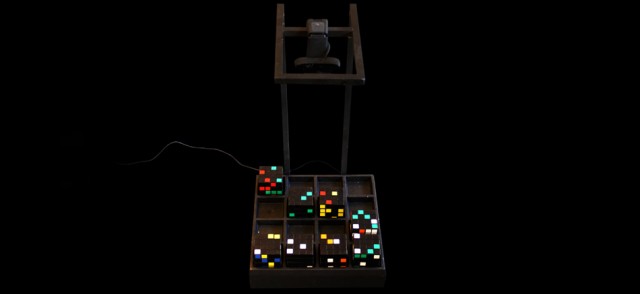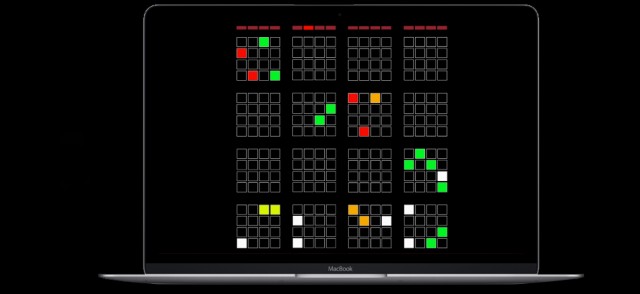The future happens gradually — and then by the time you’re sequencing a Web browser using Rubik’s Cubes, you might barely notice.
But Sweden’s most inventive producer is back yet again with his latest novelty, this time turning one of the world’s best-selling toys (hundreds of millions of units) into a usable sequencer.
Håkan Lidbo (concept and sound design) teams up with Per-Olov Jernberg (programming & visual design) and Romeo Brahasteanu (game board). The clever conceit here is to swap black for one of the colors, thus creating a foreground and background. Make a 4×4 grid of these cubes of 4×4 each, and you have a very usable sequencer – in fact, one more flexible than a lot of hardware sequencers out there, I might add. (It also bears some resemblance to my favorite drum machine of the moment, iOS’ Elastic Drums.)
The design is simple. And the functionality, like other computer vision-powered sequencers, is reasonably straightforward.
A camera and led lights are mounted over a game board painted in matte black.
A color recognizing algorithm built in a web sequencer for Chrome playing back sounds. Each color represent one musical instrument, totally 6 different instruments. Each position horizontally represents a beat in a 4/4 loop. Each position vertically represents a key from low pitch closest to the player and high pitch further up.
But, wait a minute — remember that what made Rubik’s Cube so popular is that it’s a puzzle. As it happens, making this work as a sequencer is intentionally, and possibly entertainingly, challenging:
The setups can be any sound you put into the sequencer but in the demo film, this is the set up: White is drums, green is bass, orange is percussion, red is synth 1, yellow is synth 2, blue is synth 3.In order to compose, the played have to place the right cube in the right box and then twist the cube to get the desired combination. This is quite complicated as it is but when changing one instrument it effect other instruments. So composing music becomes a puzzle. A very difficult puzzle. But why does it have to be easy? Most of today’s electronic music tools have a low learning curve. But the Cube Sequencer is not easy. Just like learning how to play the violin or chess – or to solve the Rubik’s Cube, this takes time to master.
Welcome to the game of sequencing.
Fun stuff.
(Note: as spotted in comments, this appears to be Rubik’s Revenge, specifically.)
More on the project:
http://hakanlidbo.com/archives/3892
If this all seems too mechanical for you, check out Hakan’s last project, which tends in a different direction entirely – tunnels that sing back to you, based on pitch recognition.

